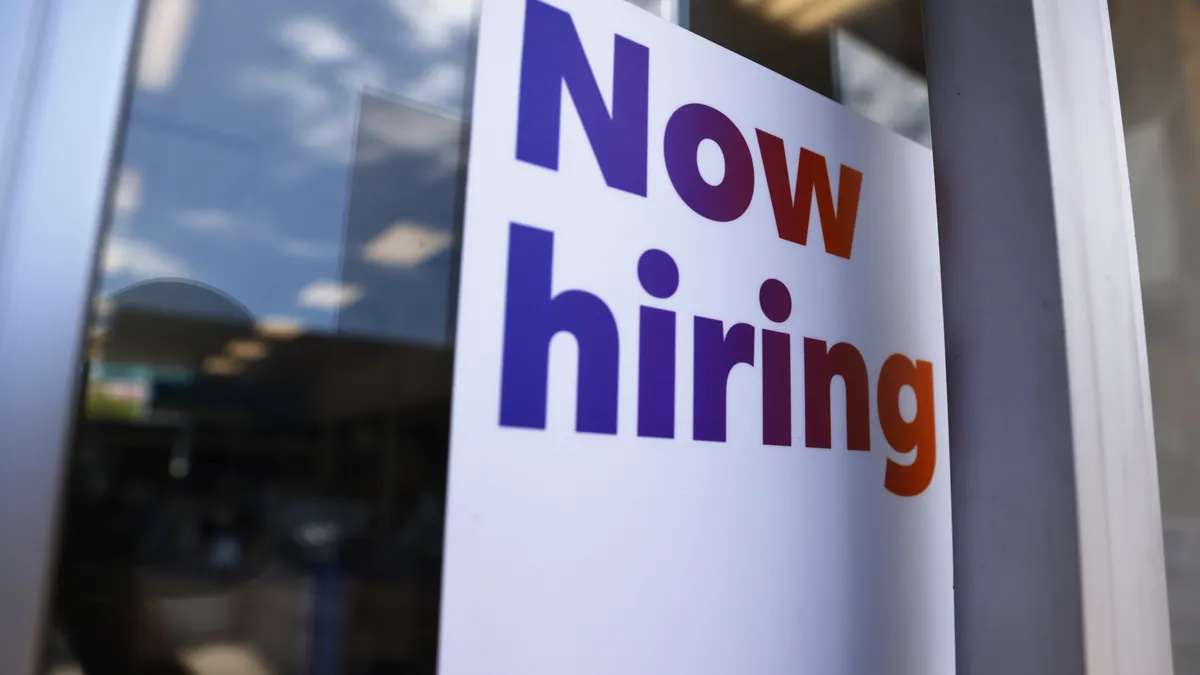Dive Brief:
- U.S. employers far outshined forecasts and expanded payrolls by 528,000 in July while wages surged at a 5.2% annual pace for the second straight month, increasing odds the Federal Reserve will press on with aggressive monetary tightening, economists said.
- “The only way to describe the U.S. job market is ‘hot,’” Madhavi Bokil, senior vice president of credit strategy and research at Moody’s said in an email. “Strong payroll gains coupled with strong wage growth mean demand-side pressures on inflation remain in place, so the Fed will remain on track for aggressive, front-loaded rate hikes to tamp down inflation.
- The “robust and resilient” job market will probably prompt the central bank to raise the benchmark interest rate from its current range of 2.5% to 2.75%, to 3.5% to 3.75% by the end of this year and to 4% by March 2023, Bokil predicted. Policymakers, eager to curb the highest inflation in four decades, have already increased borrowing costs this year at the fastest pace since the 1980s.
Dive Insight:
The surge in both payrolls and average hourly earnings belie recent signs of an economic downturn, supporting comments by Fed Chair Jerome Powell on July 27 that rapid job growth indicates that the economy is not in recession.
The economy — slowed by weakening manufacturing, cooling demand for housing and flagging spending by consumers and businesses — shrank 0.9% during the second quarter after slumping 1.9% during the first three months of 2022. A recession is commonly defined as at least two consecutive quarters of negative growth.
“Recession — what recession?” Fitch Ratings Chief Economist Brian Coulton said in an email Friday after the Labor Department reported payroll gains. “The U.S. economy is creating new jobs at an annual rate of 6 million — that’s three times faster than what we normally see historically in a good year.”
If the trend continues, the current 3.5% unemployment rate may fall toward 3% and levels unseen since the 1950s, Coulton said. The robust labor market “means it may take some time and a lot of rate hikes to slow core inflation down.”
The increase in July payrolls more than doubled the consensus estimate of 250,000.
“This is a hefty upside surprise,” Pantheon Macroeconomics Chief Economist Ian Shepherdson said in an email, noting strong job growth in services, construction and manufacturing. “This looks odd, given every manufacturing and construction indicator we know has fallen in recent months, to say nothing of the slowing in consumer spending growth to just 1%” during the second quarter.
The jobs report suggests that consumer spending will increase in coming weeks, Bokil said. “With the bulk of jobs growth in pandemic-affected services, especially the leisure and hospitality sector, this is the clearest sign yet that consumer demand patterns are rapidly returning to their pre-COVID norms.”
Unlike the gains in payrolls, the rise in wages will probably not hearten Fed officials, Shepherdson said.
“Policymakers will not be pleased to see the 0.5% increase in hourly wages in July,” he said, predicting that they will raise the federal funds rate by either 0.5 percentage point or 0.75 percentage point at their next two-day meeting ending on Sept. 21.
“We still hope for the former, but the data over the next seven weeks will need to be more or less uniformly on the soft side for that to happen,” Shepherdson said.













